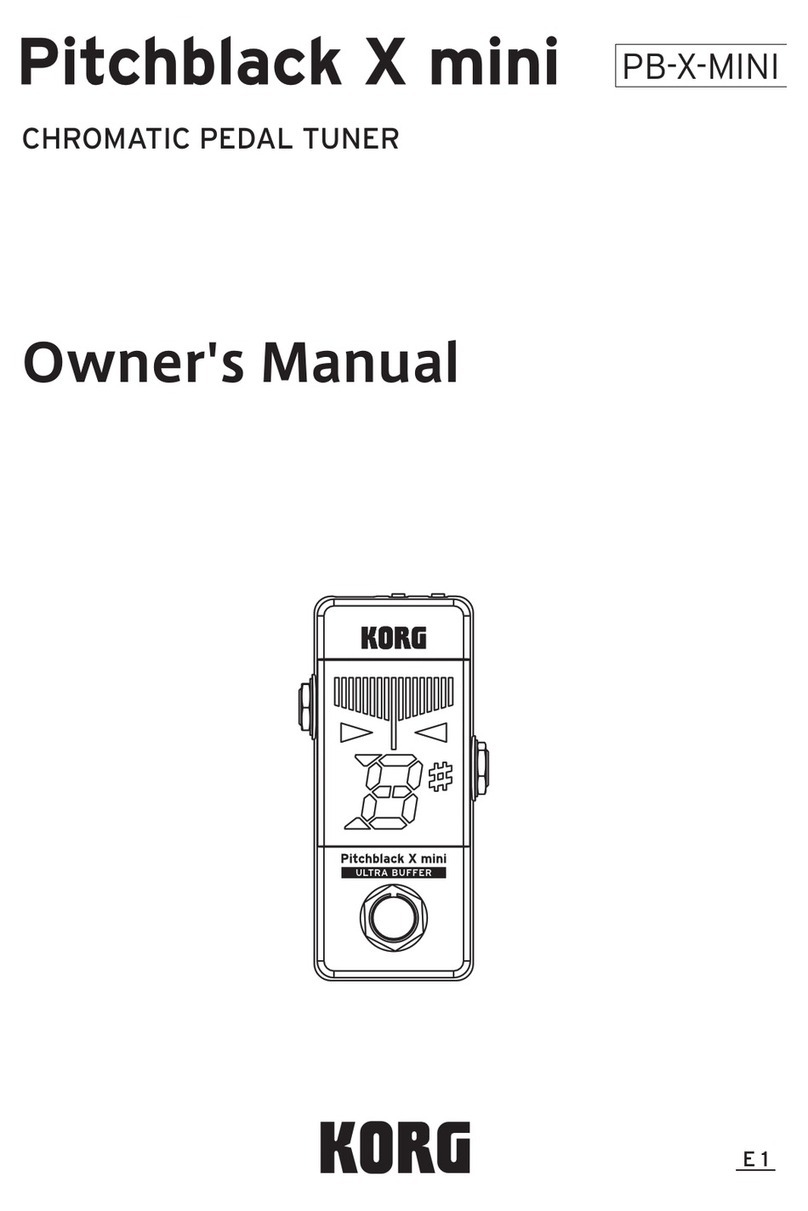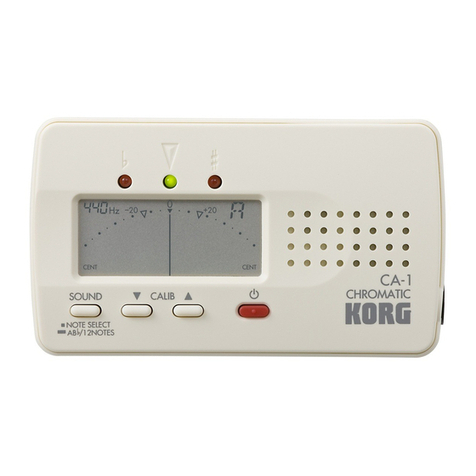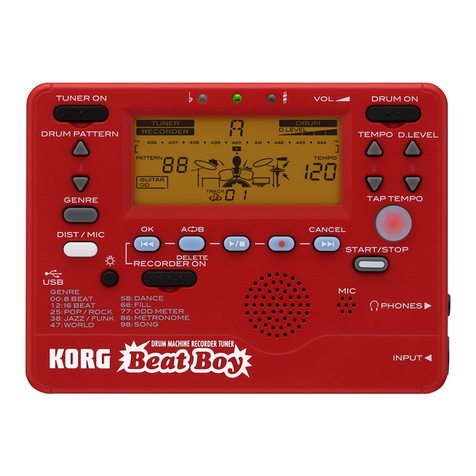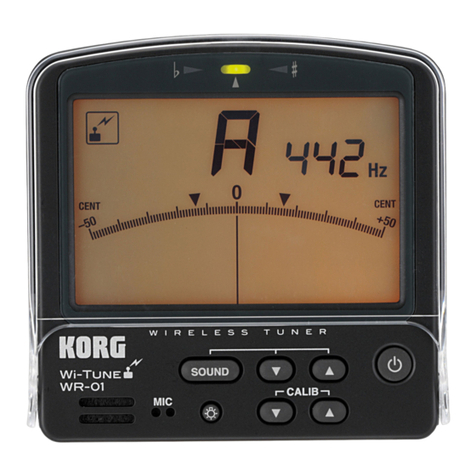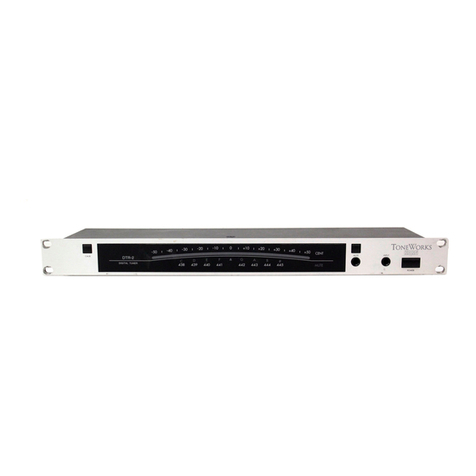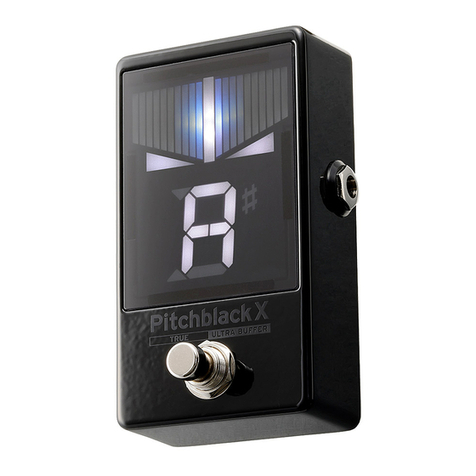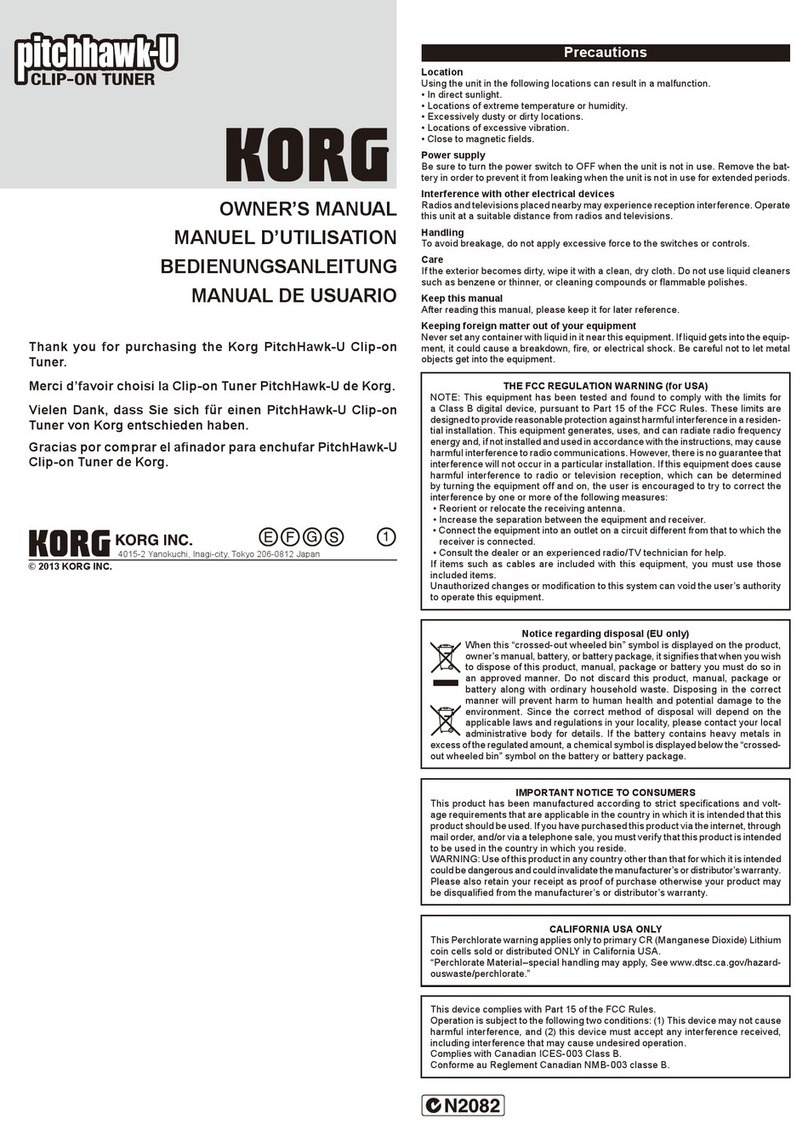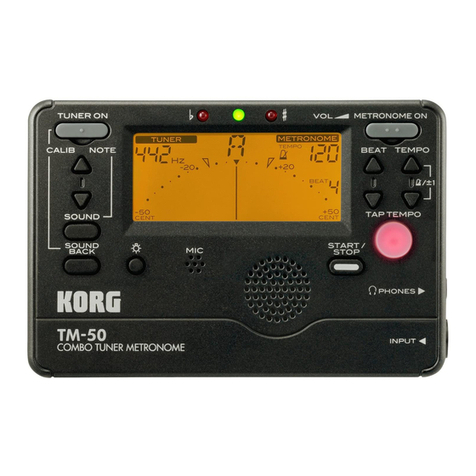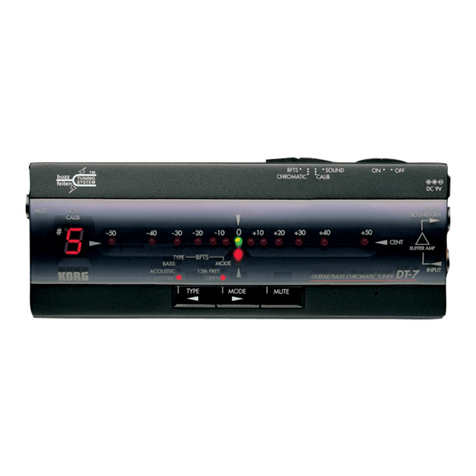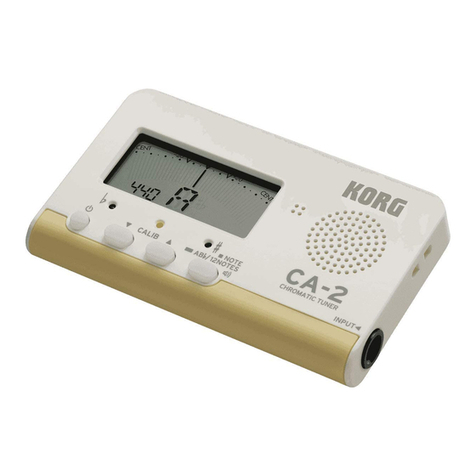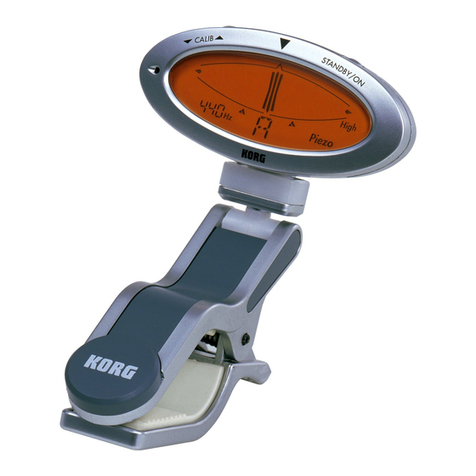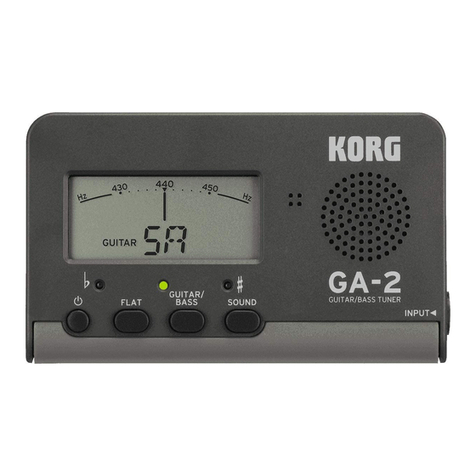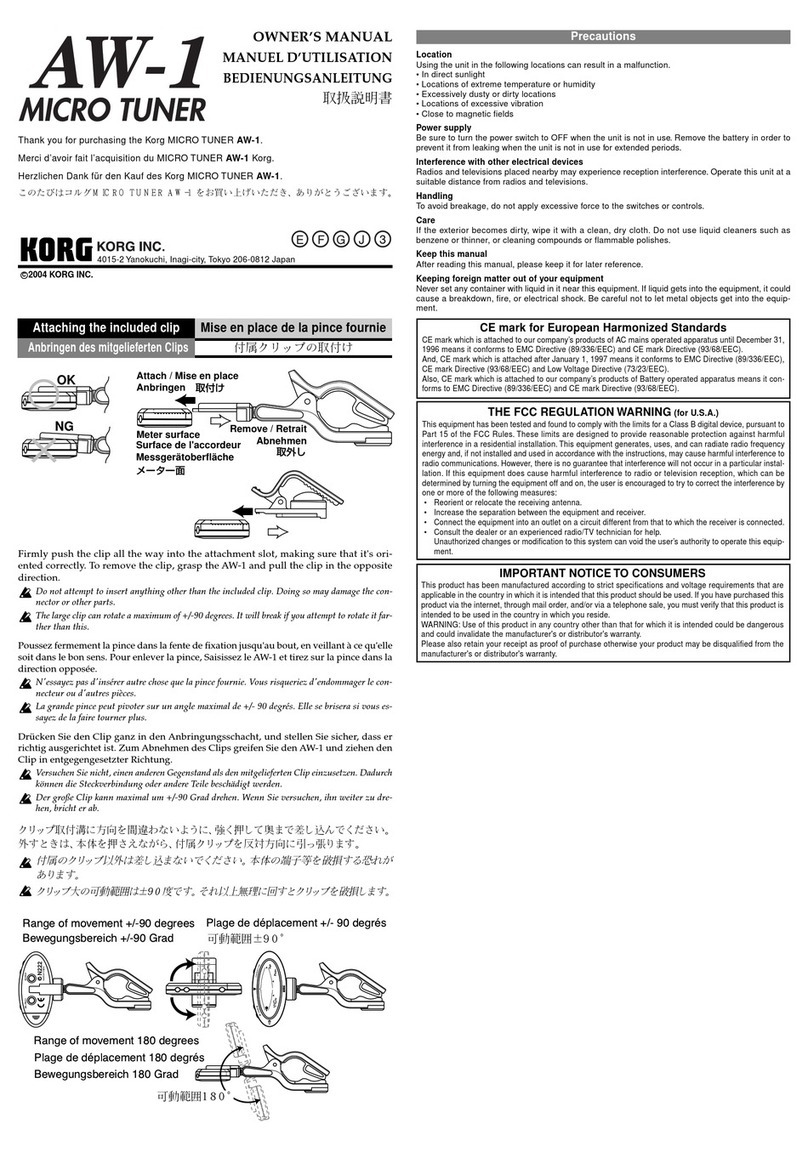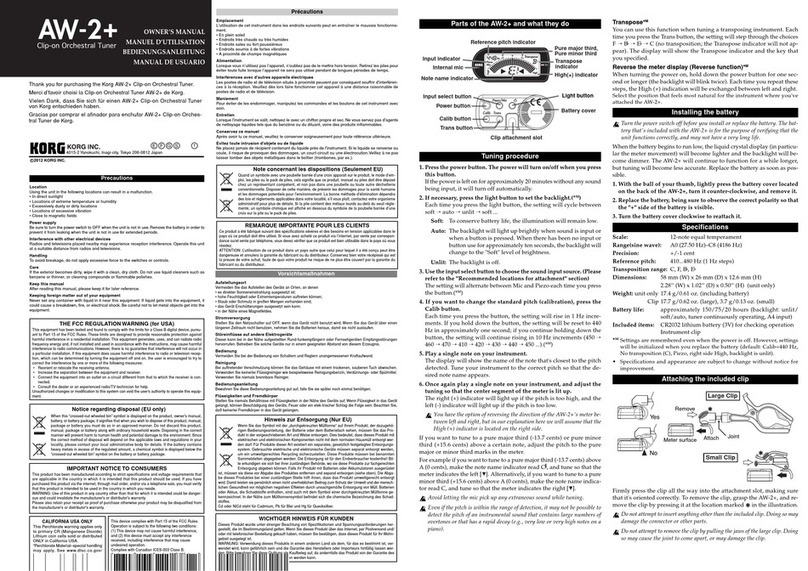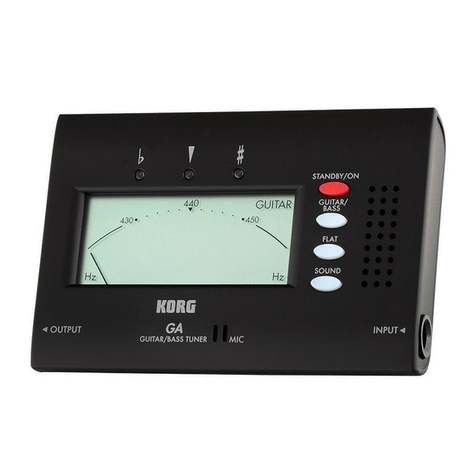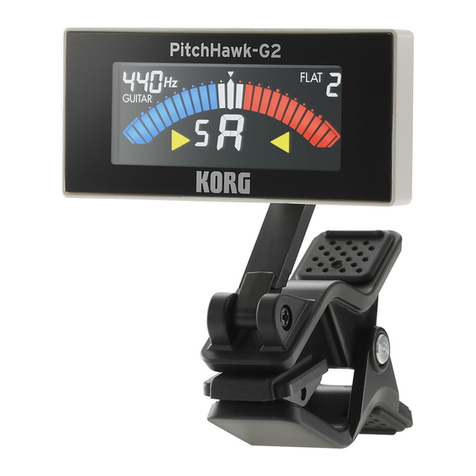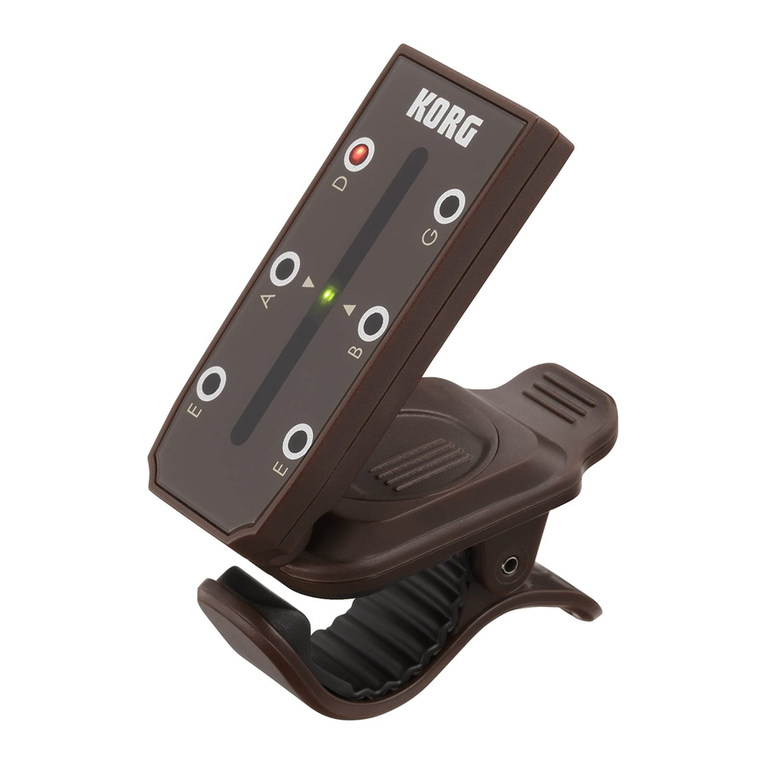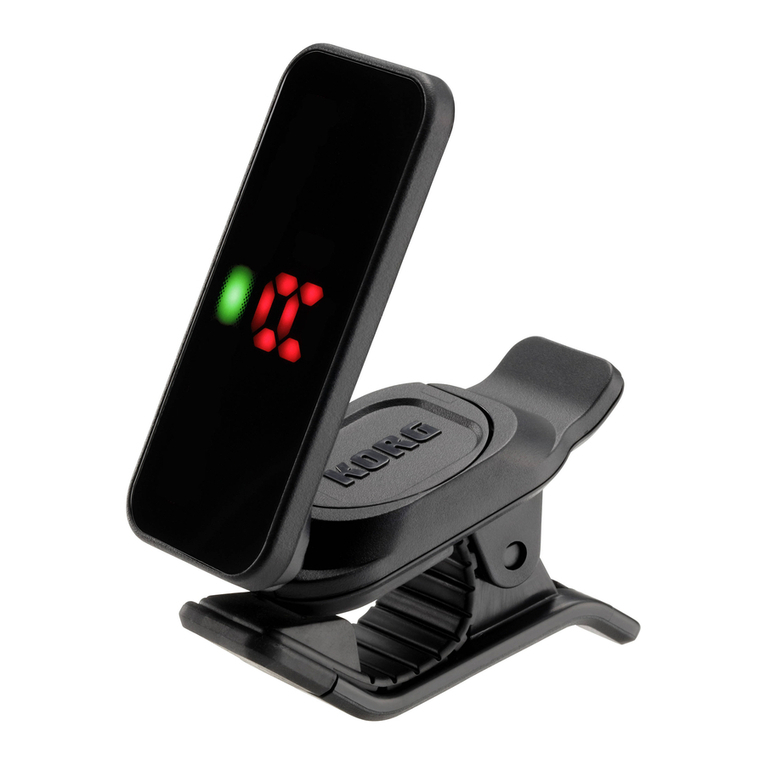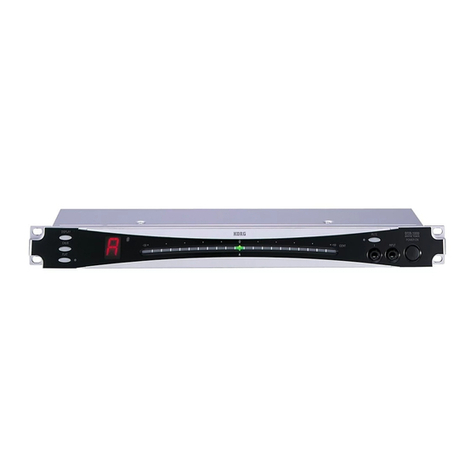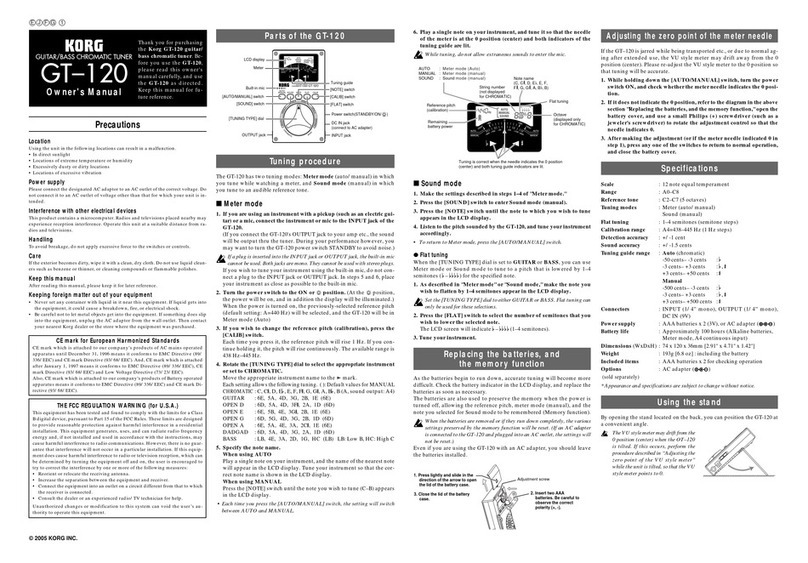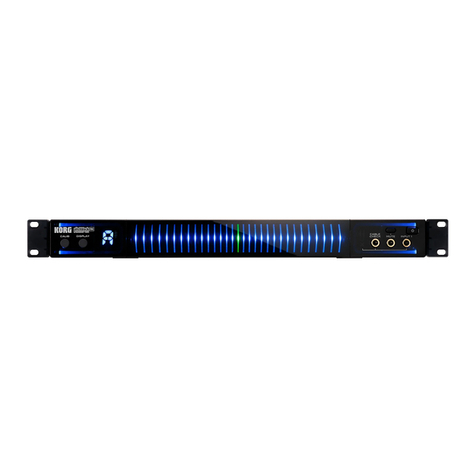
Vorsichtsmaßnahmen
Aufstellungsort
Vermeiden Sie das Aufstellen des Geräts an Orten, an denen.
• es direkter Sonneneinstrahlung ausgesetzt ist;
• hohe Feuchtigkeit oder Extremtemperaturen auftreten können;
• Staub oder Schmutz in großen Mengen vorhanden sind;
• das Gerät Erschütterungen ausgesetzt sein kann.
• in der Nähe eines Magnetfeldes.
Stromversorgung
Schließen Sie das optionale Netzteil nur an eine geeignete Steckdose an.
Verbinden Sie es niemals mit einer Steckdose einer anderen Spannung.
Störeinüsse auf andere Elektrogeräte
Dieser kann bei in der Nähe aufgestellten Rundfunkemp-fänger oder Fernseh-
geräten Empfangsstörungen hervorrufen. Betreiben Sie solche Geräte nur in
einem geeigneten Abstand von diesem Erzeugnis.
Bedienung
Vermeiden Sie bei der Bedienung von Schaltern und Reglern unangemessenen
Kraftaufwand.
Reinigung
Bei auftretender Verschmutzung können Sie das Gehäuse mit einem trocke-
nen, sauberen Tuch abwischen. Verwenden Sie keinerlei Flüssigreiniger wie
beispielsweise Reinigungsbenzin, Verdünner- oder Spülmittel. Verwenden Sie
niemals brennbare Reiniger.
Bedienungsanleitung
Bewahren Sie diese Bedienungsanleitung gut auf, falls Sie sie später noch
einmal benötigen.
Flüssigkeiten und Fremdkörper
Stellen Sie niemals Behältnisse mit Flüssigkeiten in der Nähe des Geräts auf.
Wenn Flüssigkeit in das Gerät gelangt, können Beschädigung des Geräts,
Feuer oder ein elektrischer Schlag die Folge sein. Beachten Sie, dass keinerlei
Fremdkörper in das Gerät gelangen. Sollte ein Fremdkörper in das Gerät ge-
langt sein, so trennen Sie es sofort vom Netz. Wenden Sie sich dann an Ihren
KORG-Fachhändler.
Hinweis zur Entsorgung (Nur EU)
Wenn Sie das Symbol mit der „durchgekreuzten Mülltonne“ auf
Ihrem Produkt, der dazugehörigen Bedienungsanleitung, der Bat-
terie oder der Verpackung sehen, müssen Sie das Produkt in der
vorgeschriebenen Art und Weise entsorgen um Schäden an der
menschlichen Gesundheit und der Umwelt zu vermeiden.
Batterien oder Akkus, die Schadstoe enthalten, sind auch mit
dem Symbol einer durchgekreuzten Mülltonne gekennzeichnet. In
der Nähe zum Mülltonnensymbol bendet sich die chemische Bezeichnung
des Schadstoes.
WICHTIGER HINWEIS FÜR KUNDEN
Dieses Produkt wurde unter strenger Beachtung von Spezikationen und
Spannungsanforderungen hergestellt, die im Bestimmungsland gelten.
Wenn Sie dieses Produkt über das Internet, per Postversand und/oder mit
te lefonisc her Bestell ung gekauf t habe n, müs sen Si e be st ät igen, dass dies es
Produkt für Ihr Wohngebiet ausgelegt ist.
WARNUNG: Verwendung dieses Produkts in einem anderen Land als dem,
für das es bestimmt ist , ver wendet wir d, kann gefähr lich sein und die Gar ant ie
des Herstellers oder Importeurs hinfällig lassen werden. Bitte bewahren
Sie diese Quittung als Kaufbeleg auf, da andernfalls das Produkt von der
Garantie des Herstellers oder Importeurs ausgeschlossen werden kann.
* Alle Produkt- und Firmennamen sind Warenzeichen oder eingetragene
Warenzeichen der betreenden Eigentümer.
Precauciones
Ubicación
El uso de la unidad en las siguientes ubicaciones puede dar como resultado
un mal funcionamiento:
• Expuesto a la luz directa del sol.
• Zonas de extremada temperatura o humedad.
• Zonas con exceso de suciedad o polvo.
• Zonas con excesiva vibración.
• Cercano a campos magnéticos.
Fuente de alimentación
Apague la unidad cuando no la use la batería. Retire las baterías si no va a
usar la unidad durante un tiempo largo.
Interferencias con otros aparatos
Las radios y televisores situados cerca pueden experimentar interferencias
en la recepción. Opere este dispositivo a una distancia prudencial de radios
y televisores.
Manejo
Para evitar una rotura, no aplique excesiva fuerza a los conmutadores o
controles.
Cuidado
Si exterior se ensucia, límpiese con un trapo seco. No use líquidos limpiadores
como disolvente, ni compuestos inamables.
Guarde este manual
Después de leer este manual, guárdelo para futuras consultas.
Mantenga los elementos externos alejados del equipo
Nunca coloque ningún recipiente con líquido cerca de este equipo, podría
causar un cortocircuito, fuero o descarga eléctrica. Cuide de que no caiga
ningún objeto metálico dentro del equipo.
Nota respecto a residuos y deshechos (solo UE)
Si aparece el símbolo del cubo de basura tachado sobre un
producto, su manual del usuario, la batería, o el embalaje de
cualquiera de éstos, signica que cuando tire dichos artículos
a la basura, ha de hacerlo en acuerdo con la normativa vigente
de la Unión Europea para prevenir daños a la salud pública y al
medioambiente. Le rogamos que se ponga en contacto con su
ocina o ministerio de medioambiente para más detalles. Si la
batería contiene metales pesados por encima del límite permitido, habrá
un símbolo de un material químico, debajo del símbolo del cubo de ba-
sura tachado.
NOTA IMPORTANTE PARA EL CONSUMIDOR
Este producto ha sido fabricado de acuerdo a estrictas especic aciones
y requerimientos de voltaje aplicables en el país para el cual está desti-
nado. Si ha comprado este producto por internet, a través de correo, y/o
venta telefónica, debe usted vericar que el uso de este producto está
destinado al país en el cual reside. AVISO: El uso de este producto en
un país distinto al cual está destinado podría resultar peligroso y podría
invalidar la garantía del fabricante o distribuidor. Por favor guarde su
recibo como prueba de compra ya que de otro modo el producto puede
verse privado de la garantía del fabricante o distribuidor.
* Todos los nombres de productos y compañías son marcas comerciales
o marcas registradas de sus respectivos propietarios.






